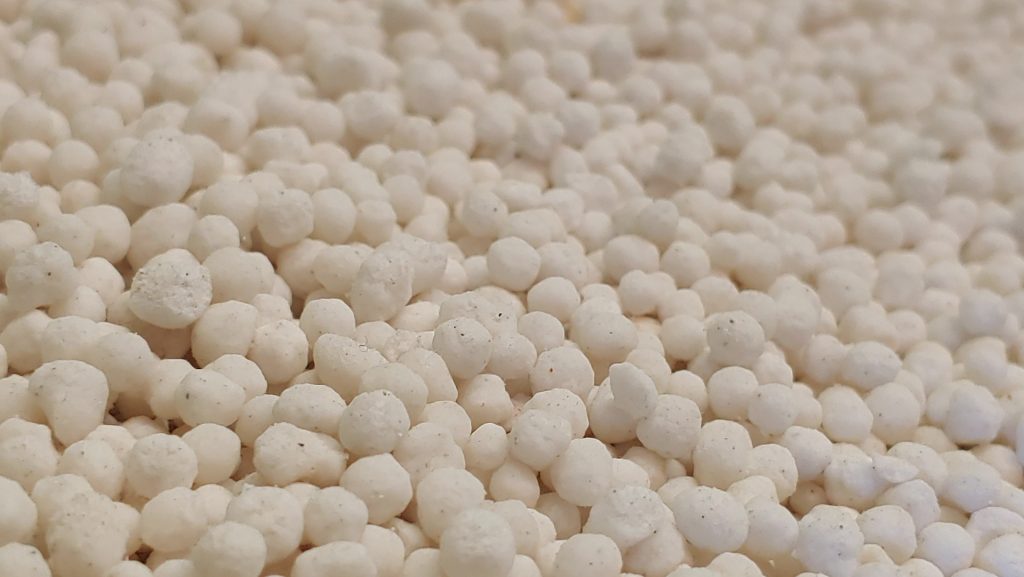
It’s the dirty little secret behind a beautiful lawn: fertilizer. But this lawn feeder can be surprisingly complicated. There are three parts to understanding how much fertilizer you need for your lawn. First, you must choose a quality fertilizer, then you need to be careful to apply the right amount, and lastly, you will need to apply it at the right time of the season. If your goal is the long-term health of your lawn, read on to learn how proper fertilizing can help you reach your goals.
What is the best ratio for lawn fertilizer?
The best lawn fertilizer ratio typically consists of 3 to 4 times more nitrogen than the phosphorus content. The potassium should be about half (or slightly less than that) of the nitrogen content.
How do I calculate how much fertilizer I need?
Fertilizer recommendations for lawns can be confusing to the average homeowner. These instructions are usually given in pounds of nitrogen to be applied per 1,000 square feet. Home gardeners often have difficulty converting these recommendations to the amounts needed for their selected grade of nitrogen fertilizer and their home’s lawn size. Luckily, you can use online fertilizer calculators to simplify things.
Can I put too much fertilizer on my lawn?
There is the idea of “too much of a good thing,” and that definitely applies when it comes to fertilizing your lawn! Applying too much fertilizer to your lawn will cause the nitrogen and salt levels in the soil to increase rapidly, which can damage or even kill the grass. When this happens, it is known as “fertilizer burn” and looks like yellow and brown strips or patches of dead grass. These symptoms can appear as soon as the day after a fertilizer application, making it easy to determine the cause.
Can I fertilize my lawn every 2 weeks?
To avoid over-fertilizing, applying a fertilizer every two weeks is not recommended. Fertilizing as often as every two weeks will likely lead to problems such as lawn burn, excessive grass growth, as well as polluted water that can lead to toxic algae growth. A natural, healthier way of feeding your lawn every two weeks would be to simply leave the grass clippings on the lawn surface after mowing your grass.
What happens if I over-fertilize the lawn?
Along with “fertilize burn,” over-fertilizing can cause damage to your turf’s root structure, as well. Some fertilizers contain high levels of nitrogen, which if absorbed in large amounts can become harmful. What mainly causes the dreaded “burn,” however, is an abundant accumulation of soluble salts.
What do you do if you burn your lawn with fertilizer?
If you’ve overdone it with the fertilizer, you may still be able to save your lawn. Burned lawns will need a generous amount of water to get back to green. It’s vital that you water the lawn as soon as you spot any brown or yellow patches to prevent further damage. Slowly soak the affected areas every day for about a week to fully flush out the extra salt. To avoid causing sun damage while the lawn is in crisis, be sure to water early in the morning. Within a few weeks, the affected areas should be turning back to green. If not, those areas of your lawn may need to be dug up and overseeded to inspire new growth.
What month should I fertilize my lawn?
Most lawn care companies recommend that you apply lawn fertilizer in the spring, between February and April. This is when your grass will start to green up as it begins to actively grow. Basically, if it looks like your grass is ready for its first mowing of the season, then it should also be ready for lawn fertilizer.
While most people know to fertilize their lawns in the spring, it is important to remember that fall feeding is critical, too. In the fall, grass roots are going down into the soil and need fertilizer to stay healthy. This is the most important application of fertilizer for the whole year since it will protect your lawn as it goes dormant over winter. However, if the fall you should use a specific fall fertilizer that is slightly higher in phosphorous and potassium, as it will promote better root growth. To ensure optimal lawn health, fertilize heavily in the fall and lightly in early spring.
What is the best lawn fertilizer for early spring?
A longer-lasting fertilizer is typically healthier for your lawn in the spring, since it requires fewer applications. Nitrogen is the most important nutrient, but keep in mind that there are fast-release and controlled-release nitrogen sources. To check what the fertilizer contains, just look in the guaranteed analysis section on the back of the bag. Key terms to look for include controlled-release, slow-release, slowly-available, or water-insoluble nitrogen. Some specific types that may be listed include ureaform, sulfur-coated urea, polymer-coated urea, and IBDU (isobutylidenediurea). Several organic nitrogen sources are controlled-release if you prefer a more natural, less artificial choice. Most quality lawn fertilizers offer a balance of fast and controlled release sources to offer a fertilizer that will provide some quick color and some long-lasting nitrogen.
How often should you put Epsom salt on your lawn?
Some homeowners like to use Epsom salt as a natural lawn fertilizer in the spring to facilitate lush green growth. Epsom salt contains magnesium, which is key to seed germination, chlorophyll production, and improving the uptake of nitrogen, phosphorus, and sulfur.
To try this method, add 2 tablespoons to each gallon of water used on the lawn. If you have a sprinkler system, lightly sprinkle the salt directly atop the grass and then allow the system to water it into the sod.
How long does it take for fertilizer to turn grass green?
Just like over-applying fertilizer will yield negative results quickly, you will also know right away if you have done a good job fertilizing your lawn. If you’ve fertilized properly, you should start to see results anywhere from 1 to 5 days afterward, depending upon the type of fertilizer you used.
How much should I water my lawn after fertilizing
How much fertilizer you need is directly impacted by your watering schedule. The more you water your lawn, the more fertilizer it will need. As the grass grows, it uses more nutrients. If you have an automatic sprinkler system, you should fertilize your lawn about every six weeks. You don’t want the watering to outpace the fertilizing as that could negatively impact the lawn’s growth cycle. If you don’t have a sprinkler system, you can wait an additional two weeks between applications. Also, be sure to carefully read the fertilizer label to learn whether you should water the lawn before or after applying the product. Granulated fertilizers need moisture to break down after application, while other fertilizers require you to soak the lawn beforehand.
Should I fertilize my lawn before or after mowing?
Ideally, you’ll want to mow and rake before fertilizing so that excess lawn waste is removed, allowing the fertilizer to have an easier time reaching the soil. Aerating your soil before fertilizing can also help. When fertilizing a lawn, it is best to apply fertilizer after the lawn has been mowed so it has a few days to absorb the fertilizer.
Choosing your turf
Although fertilizing your lawn is an important part of creating that lush, green turf homeowners dream of, it isn’t the complete equation. If you’ve found that you’re following all the best tips on watering, fertilizing, and mowing your lawn, but you still aren’t getting the results you hoped for, it might be time to reconsider your turf type. Reach out to the pros at Turfgrass Group to ensure you’re using the right grass variety for your climate and property.
